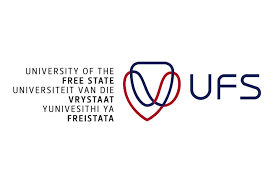University of the Free State: New projection system contributes to enhanced experience at Naval Hill Planetarium
The Naval Hill Planetarium at the Centre for Earth and Space on Naval Hill was inaugurated on 1 November 2013. It was the first digital planetarium in Africa south of the Sahara.
The Department of Physics at the University of the Free State (UFS) is responsible for the Naval Hill Planetarium (formerly the Lamont-Hussey Observatory). The department uses the planetarium to educate and inform citizens about the natural sciences. The planetarium, together with the Boyden Observatory, is also important for the display and communication of South Africa’s astronomical heritage.
The planetarium system was recently upgraded in a project that cost R6 million. According to Prof Matie Hoffman from the Department of Physics, it was time to upgrade the computers and graphic cards, and to replace the lamp projectors with laser projectors.
Funding for the state-of-the-art equipment came from the Faculty of Natural and Agricultural Sciences and the Information and Communication Technology Services (ICT Services) at the university. Businesses in Bloemfontein – First Technology and Raubex Construction – also contributed to the project.
Presenting programmes more often
Planetarium specialists Dieter Schwab and Alex Reither from Sky-Skan Europe, based in Germany, installed the new equipment over a period of two weeks.
Prof Hoffman says the new equipment will enhance the experience of people visiting the planetarium for a close encounter with the wonders of the universe to deepen their appreciation of science and astronomy.
“Besides a clearer image with better colour, the new projectors will also be more economical to operate. This means we will be able to offer programmes at the planetarium more often,” he says.
The upgrades also include new software. Prof Hoffman explains that the software will enable more sophisticated presentations and open the door to the use of the planetarium for higher level visualisation of scientific data where any large data sets with many variables are involved, such as climate science, astrophysics, and cosmology.
Offering an incredible experience
After completion of the installation, a period of two weeks will be spent on training to master the use of the new equipment and the software. The public can expect the first show with the new equipment at the end of June.
“I am most looking forward to the planetarium creating an incredible experience – better than in the past – for the public and increasing everyone’s admiration and understanding of the universe. I also believe the planetarium is an excellent facility to improve students’ skills in science communication, and it provides these students the opportunity to share their knowledge with the public,” concludes Prof Hoffman.

